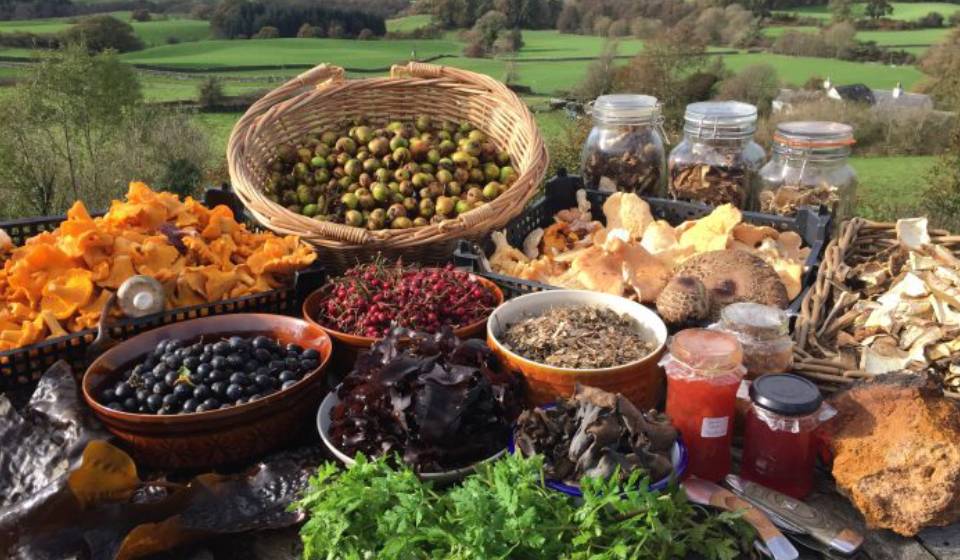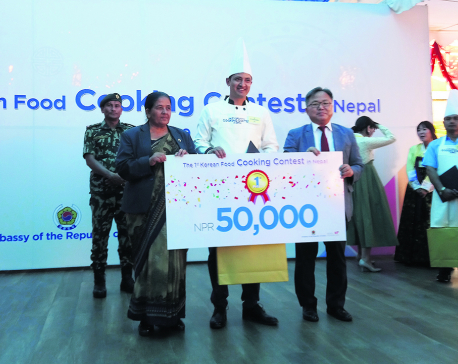
OR
Editorial
Reviving food self-sufficiency in Nepal
Published On: July 1, 2023 07:49 AM NPT By: Republica | @RepublicaNepal

The increasing volume of imports in our agrarian country is a cause for serious concern. Nepal, known for its rich agricultural heritage, has experienced a steady decline in paddy plantation, leading to a growing dependence on foreign imports. This worrisome trend demands immediate attention from the government authorities, urging them to take proactive measures to revive and promote the agricultural sector. The decline in paddy cultivation is primarily a consequence of a significant number of Nepali citizens leaving the country for overseas employment. As more individuals seek opportunities abroad, the area of paddy plantation has gradually shrunk, posing a threat to our once self-sufficient food production. On the occasion of National Paddy Day, it is crucial for the relevant government bodies to pledge their commitment to ensuring farmers receive timely access to fertilizers, while providing subsidies and incentives to encourage paddy cultivation. The government's aspiration to achieve self-sufficiency in food production is hindered by the staggering imports of rice and paddy, which reached approximately Rs 33.5 billion in the first 11 months of this year alone, as reported by the Department of Customs. These figures underscore the urgency for immediate action. The inability to increase rice production has led to a heavy reliance on foreign sources, particularly India. To reverse this trend, a concerted effort is required to boost domestic rice production.
The key factors contributing to the decline in rice production include the lack of access to advanced rice seed varieties, chemical fertilizers, irrigation facilities, and mechanized tools for planting. Without these essential resources, rice production and productivity continue to decrease, exacerbating our dependence on imports. To break free from this reliance, the government must prioritize the availability of quality seeds, irrigation, and fertilizers to the farmers to enhance rice production. While the government and political leaders repeatedly proclaim slogans of agricultural self-sufficiency, concrete actions are yet to be seen. Nepal, once an exporter of rice, has become heavily reliant on neighboring countries such as India, China, as well as America, Vietnam, Thailand, and Bhutan for its rice supply. This over-reliance on imports can be attributed to a lack of modernization, mechanization, and commercialization in the agricultural sector. In comparison, Nepal's rice production lags far behind global standards, with only 3.8 metric tons per hectare, as opposed to the 6 metric tons achieved in other countries.
The recent celebration of the 20th Paddy Day, under the slogan "climate-adapted farmer-friendly technology to increase paddy production," provides an opportune moment to address these pressing issues. The government should seize this occasion to commit to a solid plan for increasing rice production. This plan must include expanding rice cultivation to cover 1.6 million hectares, including pre-monsoon paddy, while increasing irrigation coverage from 35 percent to 55 percent. Moreover, providing farmers with advanced seeds and fertilizers in a timely manner is crucial to boost production and encourage self-sufficiency. Efforts are already underway, such as the promotion of hybrid rice, expansion of irrigation facilities, ensuring a regular supply of fertilizers, and promoting pre-monsoon rice cultivation. Additionally, increasing subsidies on chemical fertilizers and setting minimum support prices for paddy are steps in the right direction.
However, it is essential to recognize that the challenges facing our agricultural sector go beyond inadequate modernization and commercialization. The traditional farming system has also contributed to stagnant production, resulting from factors such as insufficient irrigation, lack of quality seeds, poor soil fertility, and imbalanced fertilizer usage. Addressing these challenges requires comprehensive strategies that encompass not only technological advancements but also sustainable farming practices and effective agricultural extension services. The importance of replacing outdated rice seeds cannot be overstated. With the majority of farmers still relying on seeds that are four to five decades old, the potential for increased production remains untapped. Introducing advanced rice seed varieties can lead to a significant increase in production by 15 to 20 percent, provided that the farmers have access to these improved seeds. The growing volume of rice and paddy imports should serve as a wake-up call for the government and relevant authorities to prioritize and promote the agricultural sector. The government's aim of achieving self-sufficiency in food production should align with concrete actions to provide farmers with advanced seeds, timely access to fertilizers, irrigation facilities, and mechanized tools. Celebrating the National Paddy Day should not be limited to festivities alone; it must serve as a reminder of the urgent need to take proactive measures to revitalize our agricultural sector. It is high time we turn our aspirations of self-sufficiency into a tangible reality by fostering a robust and sustainable agricultural industry.
You May Like This

Korean food cooking contest held
KATHMANDU, June 1: A confident Gyanendra KC, chef and owner of a Korean eatery at Thamel, jokingly gave himself a... Read More...

Production increase should be first priority for ensuring food sovereignty
KATHMANDU, Sept 15: The Bill Providing for the Right to Food and Food Sovereignty, 2075 BS which was passed by... Read More...

Nepal online trade: Decorating Nepal
Nepal Online Trade is a business initiative of Sajak Yonjan that sells décor materials imported from China, Hong Kong, and... Read More...











Just In
- Nepal at high risk of Chandipura virus
- Japanese envoy calls on Minister Bhattarai, discusses further enhancing exchange through education between Japan and Nepal
- Heavy rainfall likely in Bagmati and Sudurpaschim provinces
- Bangladesh protest leaders taken from hospital by police
- Challenges Confronting the New Coalition
- NRB introduces cautiously flexible measures to address ongoing slowdown in various economic sectors
- Forced Covid-19 cremations: is it too late for redemption?
- NRB to provide collateral-free loans to foreign employment seekers







Leave A Comment